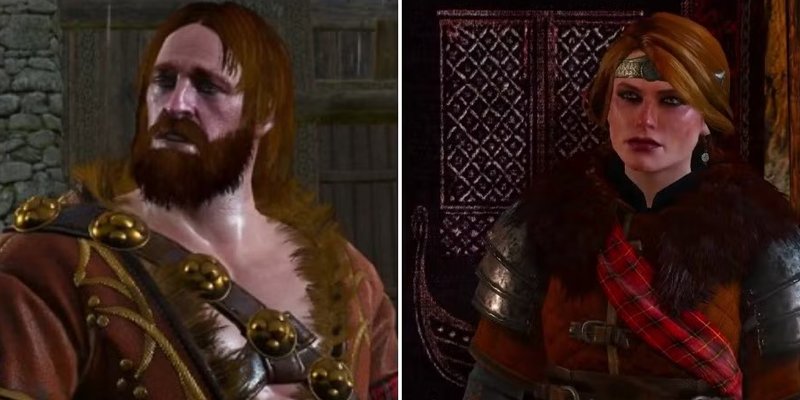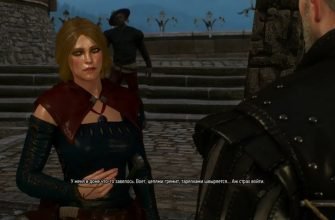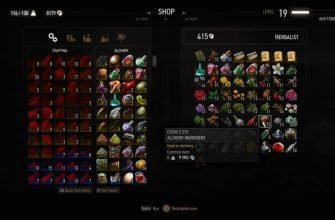Arriving in Skellige as Geralt of Rivia in “The Witcher 3: Wild Hunt,” players face a significant choice that has lasting consequences for the game world. The quest “King’s Gambit” determines the future ruler of the Skellige Isles, and the candidates are two siblings: Cerys and Hjalmar an Craite. While both choices impact the plot and the game’s world differently, a closer look reveals which outcome might be most beneficial for Skellige’s future and Geralt’s short-term benefits. ### Understanding the Succession in Skellige The plot thickens on the Skellige Isles following the death of High King Bran. The power vacuum left by his death stirs political turmoil and threatens to plunge the islands into civil unrest. Cerys and Hjalmar an Craite, children of Crach an Craite, are the main contenders for the throne. The decision isn’t merely symbolic; it heavily influences future events and the socio-political landscape of Skellige. ### Cerys an Craite: The Intelligent and Calculated Leader
Upon arriving in Skellige, players quickly recognize Cerys an Craite as a compelling character. Despite the patriarchal confines typical of Skellige, she defies gender norms and demonstrates strength and intelligence. Where Cerys truly shines is her methodical approach to leadership challenges. This quality first becomes evident during the quest “Possession,” where she aids in relieving a clan leader of a haunting curse. Her careful analysis and strategic thinking guide her actions, traits that are crucial for a ruler looking to preserve Skellige’s strength without unnecessary bloodshed.
Benefits of Choosing Cerys
If players support Cerys during “King’s Gambit,” they ultimately uncover a sinister plot behind a deadly banquet at Kaer Trolde. The mastermind, Birna, is revealed, and this information prevents further subversive actions from threatening Skellige. Siding with Cerys also grants players access to a Place of Power crucial for the Quen sign, providing a tangible in-game reward that enhances Geralt’s abilities. Cerys’s reign ushers in a period of prosperity and peace for Skellige, a departure from the traditionally tumultuous governance characterized by frequent conflicts.
### Hjalmar an Craite: Bold but Reckless
Hjalmar, elder sibling to Cerys, epitomizes the fervent, gutsy leadership style known and romanticized in Skellige culture. Introduced in “The Lord of Undvik,” he bravely, albeit rashly, sets off to slay an Ice Giant to prove his worthiness as a ruler. While his bravado and combat skills are admirable, his impulsivity often leads him into perilous situations. This trait, while endearing to some, is less desirable in a king as it may result in hasty decisions and unnecessary wars.
Implications of Supporting Hjalmar
- Choosing Hjalmar results in a different storyline where the true villains behind the Kaer Trolde banquet remain concealed. This choice withholds vital information that could stabilize Skellige’s political landscape.
- Hjalmar’s rule may lead to increased aggression, specifically launching Skellige into another war with Nilfgaard. Such conflicts lead to high casualties and weaken Skellige’s overall strength.
### The Worst-Case Scenario: Choosing Svanrige
Perhaps the least favorable option during “King’s Gambit” is allowing Svanrige to ascend the throne. The son of the late King Bran, his rise to power facilitated by his manipulative mother, Birna, leaves Skellige vulnerable to disastrous outcomes. Supporting Svanrige results in a costly war against Nilfgaard, and it could even lead to the deaths of Cerys and Hjalmar—two figures who could potentially contribute positively to Skellige’s future.
Analyzing Consequences and Benefits
When evaluating the narratives of Cerys and Hjalmar as potential rulers, it’s essential to weigh the outcomes both on a personal and broader scale. Cerys provides a more stable environment, with policies that could uplift Skellige economically and socially. The potential for peace and prosperity under her leadership stands in sharp contrast to the risks posed by Hjalmar’s more aggressive tendencies. Furthermore, while players receive notable benefits like the Quen Place of Power by aiding Cerys, the narrative closure and peace achieved are perhaps the most rewarding aspects of this decision.
Cumulative Impact of the Decision
| Aspect | Cerys as Ruler | Hjalmar as Ruler |
|---|---|---|
| Discovery of Conspiracy | Unveiled; Birna’s plot is dismantled. | Unrevealed; masterminds remain hidden. |
| Relation with Nilfgaard | Avoids war, maintains Skellige’s strength. | Potentially instigates war, weakening forces. |
| Political Stability | Ensures a stable, prosperous reign. | Continues the tradition of contentious rule. |
### Practical Advice for Players
For players aiming to experience the optimal narrative and gameplay advantages, choosing Cerys is the recommended path. Not only does this choice enhance immediate gameplay through access to the Quen Place of Power, but it also secures a stable and flourishing future for Skellige. Whereas choosing Hjalmar remains a viable option, it may appeal more to those seeking a narrative driven by conflict and battle, aligning with Skellige’s entrenched warrior culture.
While every selection offers a unique storyline experience, the selection of Cerys aligns closely with a narrative arc that balances thoughtful leadership and a promising future for Skellige. This interactive decision not only shows the depth and complexity of “The Witcher 3: Wild Hunt” but also reinforces the innovative narrative choices synonymous with the game.
Ultimately, “The Witcher 3” challenges players to engage deeply with its world-building, character dynamics, and political intricacies, providing a richly textured gaming experience that resonates across multiple playthroughs and narrative explorations.









